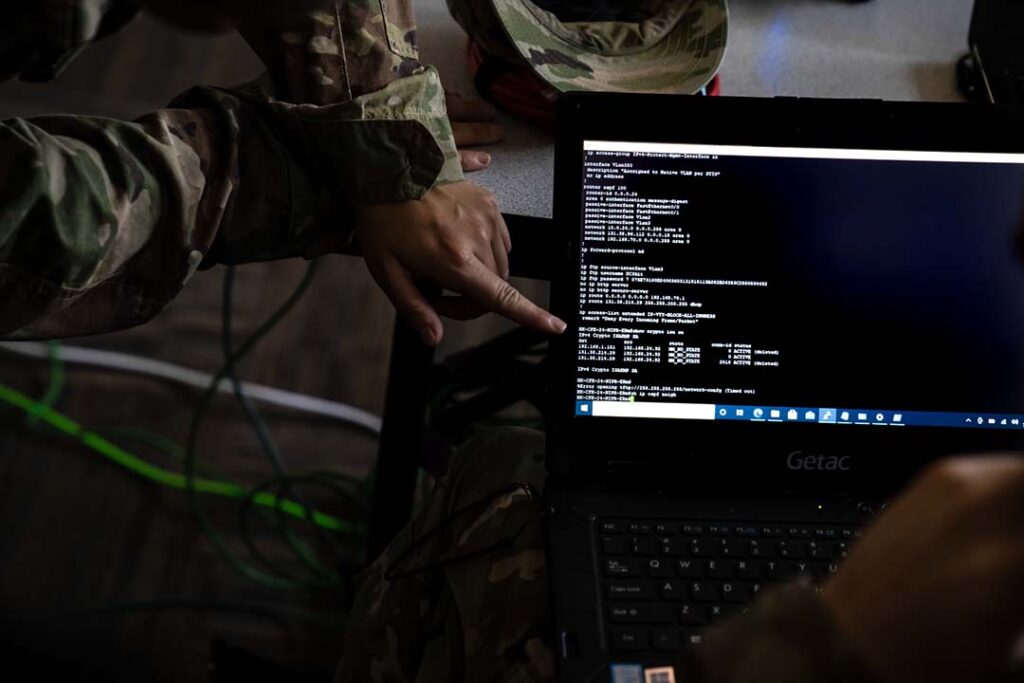THE WATCH STAFF
Military thinkers say the United States must achieve “decision superiority” to meet the evolving threats to the homeland.
U.S. Northern Command (USNORTHCOM) and the North American Aerospace Defense Command (NORAD) have made it a strategic priority.
Gen. Glen D. VanHerck, commander of USNORTHCOM and NORAD, defines the principle simply: “At its heart, decision superiority is about giving senior leaders options,” he wrote in the journal Joint Force Quarterly in April 2021. “Decision superiority,” he said, “expands the aperture beyond kinetic kill into nonkinetic solutions.”
Expanding that aperture is known as “deterrence by denial.”
“That’s where I’m focused,” VanHerck said in an August 17, 2021, discussion at the Center for Strategic and International Studies. “It’s changing the focus away from solely … end-game-defeat capability [deterrence by punishment] to day-to-day competition and creating that deterrence on a day-to-day basis. And that deterrence is created not only with military capabilities and all-domain capabilities, but it’s with my fellow combatant commanders, all 11 of them, allies and partners, like-minded nations around the globe, and all levers of influence here with our country and our other countries.”
Those collective means and shared responsibilities among military and civilian agencies can mitigate the risk associated with an attack. This “risk mitigation” is a necessary component of deterrence by denial.
So how can the U.S. best mitigate risks, create deterrence by denial and ultimately achieve decision superiority?
One way, experts say, is through an integrated defense architecture that features data sharing and artificial intelligence (AI). USNORTHCOM has conducted a series of trials, called Global Information Dominance Experiments (GIDE), designed as a catalyst for deploying AI capabilities. (Pictured: Cyber systems operate during GIDE 3 in July 2021.) One integrated-defense concept proposed by the Department of Defense is called Joint All-Domain Command and Control (JADC2).
A report by the Congressional Research Service (CRS) updated on July 1, 2021, describes JADC2 as the architecture connecting “sensors from all of the military services — Air Force, Army, Marine Corps, Navy, and Space Force — into a single network.”
Of that architecture, retired Air Force Gen. Terrence J. O’Shaughnessy, the former commander of USNORTHCOM and NORAD, wrote in the November 19, 2020, issue of Joint Force Quarterly that JADC2 “employs the power of machines to enhance decision-making.”
O’Shaughnessy uses an example from American football to illustrate: “A quarterback such as Tom Brady approaches the line of scrimmage with a brain processing two decades of NFL experiential learning. … What machine-enabled insights could do, if the information could be transmitted to the quarterback in real time, is replicate that same capability for a rookie in his first game.
“Armed with that information regarding what is likely to happen, the rookie quarterback could come to a better assessment and take an action with a higher probability of success.”
In other words, risk mitigation.
VanHerck said the GIDE trials have shown that AI and its data analysis can arm the U.S. with the means necessary for decision superiority.
Using the metaphors favored by his predecessor, VanHerck told the CSIS: “I’m encouraged by what I see. But we’re not there, and I’m not ready to spike the ball just yet.”
IMAGE CREDIT: TECH SGT. AMY PICARD/U.S. AIR FORCE

